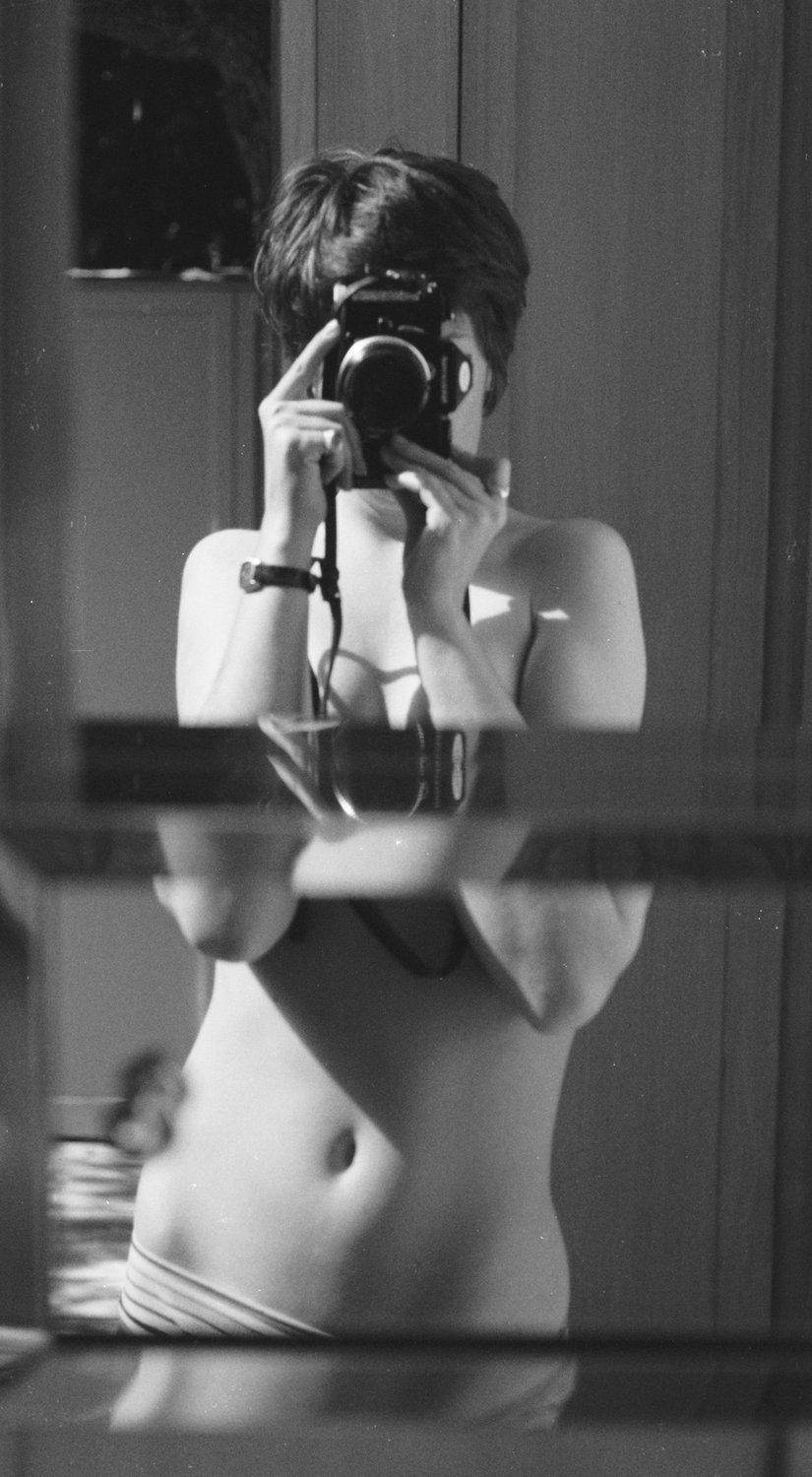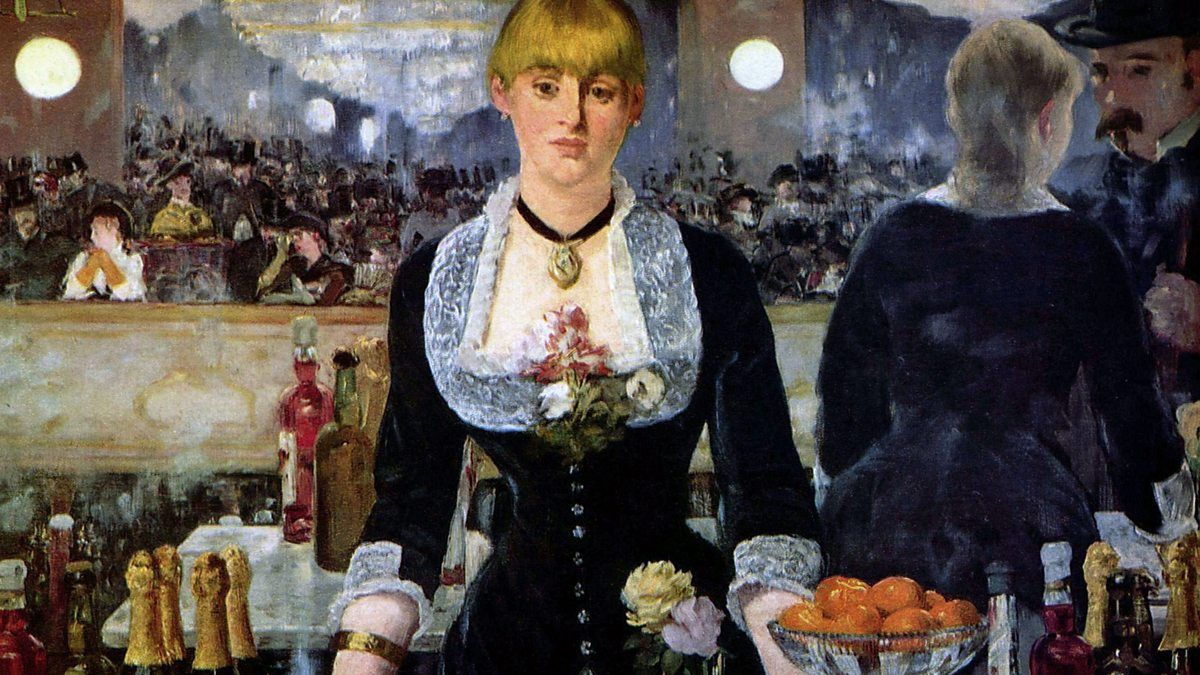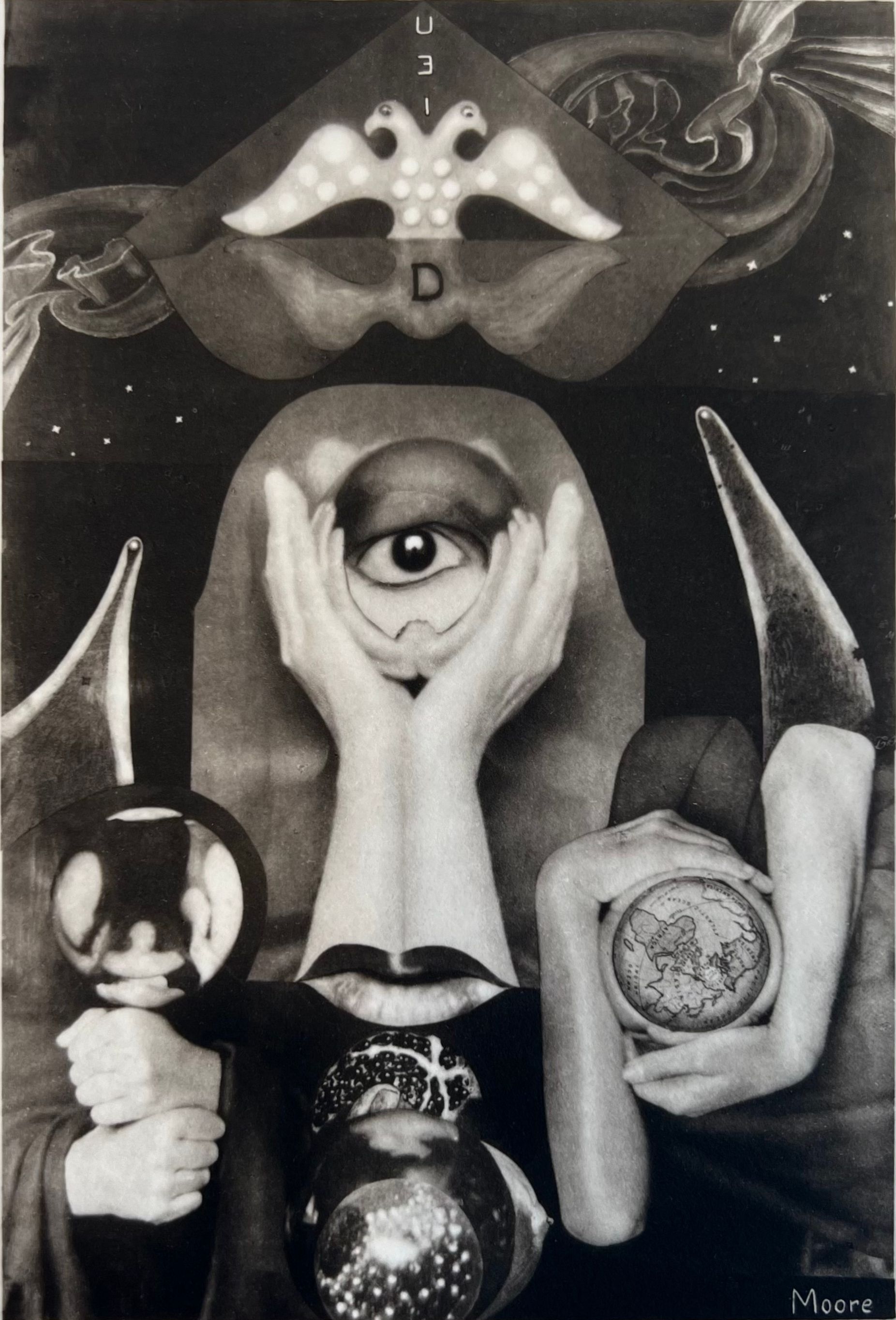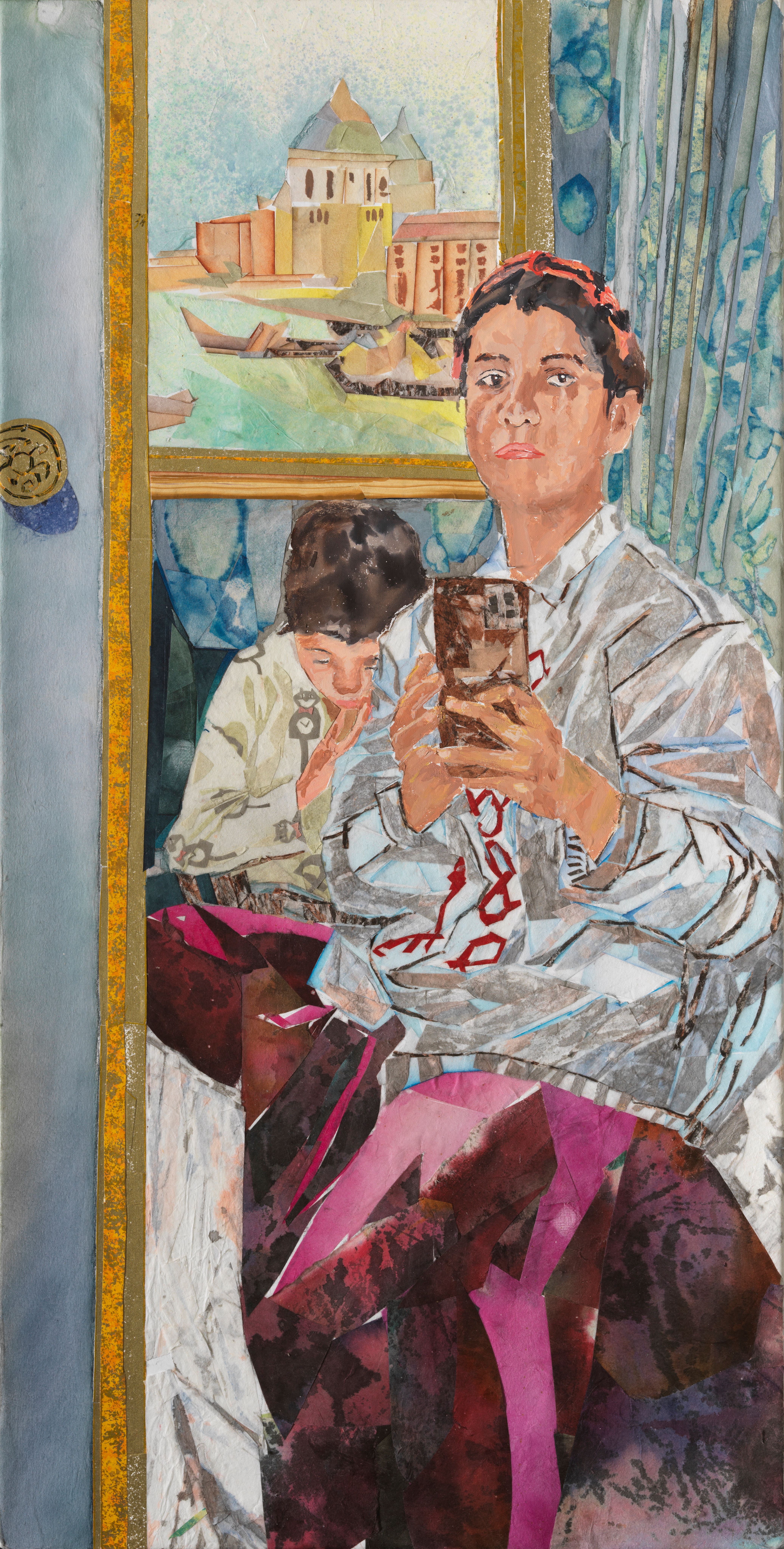
The cutting-edge virtual exhibition I’ll be Your Mirror, presented by Vortic and curated by Beth Greenacre in partnership with The Courtauld Gallery, is a bold evolution in what can be achieved in the seemingly soon-to-be infinite potentialities of the metaverse, and it plays in brilliant and complex ways upon the labyrinthine relationship our species has with mirrors, exploring what happens when artists employ mirrors physically, literally, or allegorically in their art practice. Without question, the representation of reflections and references to the mirror throughout art history provides a fascinating foundation from which to explore some of the more fundamental oppositions of human existence, and it is not surprise that Greenacre has taken Manet’s use of the mirror in the masterpiece A Bar at the Folies Bergere, as the conceptual jump-off point for her groundbreaking group show in the metaverse – it being undoubtedly one of the most mysterious, brilliant and compelling paintings in recent Western art history. The first exhibition Greenacre has curated in the virtual space present the iconic work as a ramp via which to present twelve artists ensconced in the grapple between identity, self-reflection and the gaze – asking each of us to place on a VR headset, and look at work in a way we never have before. Here, she tells Collective Culture why Manet’s masterpiece still has so much resonance in contemporary society, and why virtual reality offers new levels of conceptual immersion.
What made you excited to curate an immersive show for the virtual space?
For a while, I have been excited to talk about the potentialities of the immersive world and what it enables in the experience of art. What is so exciting is that it allows you to hang the work of young artists next to Masters – which for them is thrilling, and gives the audience an amazing opportunity to see how these works might communicate when juxtaposed. I have long worked a lot with websites, and been a champion of their potential in terms of enabling wider access to art and connecting people from outside the usual art audience, and, for me, Vortic represents the next level of that. It’s truly an immersive space – our Vortic avatars could actually have met inside the Vortic space to have this discussion, even though you could have been in South London, and I could have been in New Mexico. The simple fact that can happen radically reframes connectivity, intimacy and spatial awareness. It's still quite a weird and alien sensation, at the moment, but it’s also incredibly interesting where it can go. It takes a while to physically navigate the virtual space, but once you start to walk around and get the hang of it, you lose any self-consciousness, which I think is really interesting because you can get completely immersed in a painting, or an installation or a video - the solitary experience enhances the experience somehow, you can go even deeper.

How did the I’ll Be Your Mirror project with Vortic and The Courtauld come together?
When I approached most of the people that I approached, from artists and galleries, to institutions, they all fully embraced the possibility and the opportunity. And I don’t think that is just because it's new, but because they all recognise the massive potential of it. It's great for these galleries and institutions to have the cornerstones of their respective collections presented in a completely different environment, and re-contextualized with works from younger artists. I think it's really valuable, and it brings a wholly different audience than would walk through the physical doors of space. The audience of The Courtauld is very specific, for example, but they have gone to great lengths to engage in a more contemporary program, with the recent Peter Doig show, for example – exploring ideas of having living artists alongside the modern masters. This re-contextualizes the collection, but the digital space Vortic have created takes that opportunity even further. Now any museum can have their space mapped for the virtual space, which provides an amazing opportunity for international audiences to walk through virtual doors, and see a collection that is not only huge, but also radically interchangeable. Another thing that is great is the fact that it enables the art market to really consider its environmental footprint - bringing art and audiences together without any impact on the environment at all, which is very, very valuable for our planet.
What made you make A Bar at the Folies-Bergère by Édouard Manet the conceptual jump-off point of the show?
Well, it is a very well known painting, but it barely ever leaves The Courtauld, so it’s not really a painting that's ever going to go touring around the world and be seen by millions, so to enable mass access to that kind of work in the virtual world is hugely valuable. It inspired me to make the show because it is such a wonderfully complex work. When I first went to The Courtauld in the 90s as an undergraduate it was a painting that I always went back to again and again, because it's just so compelling. It asks so many questions that I still don't think we have all of the answers to in today’s society, which is amazing. Every time you look at it, you see something else, or you see it from a totally different angle. I think what drew me to it, as a 20 year old trying to navigate London for the first time, was the myriad relationships within the painting, but also your own relationship with the people in the painting. Obviously, as a woman you gravitate towards the female figure – a bartender who looks rather defiant, but then, in the same breath, also looks a little melancholy. And I think depending on how you felt that day, you could go yeah, I know. I get it. That's how I feel.

Is there also a distinctly anti-bourgeois class statement at work in the painting?
Well, it comes at an interesting historical moment, doesn't it? It was painted at that moment when the class systems were being questioned, and there is the conversation around her – is she more than a bartender? Is she also a prostitute? Is she working elsewhere, in that relationship with the gentleman behind her with the top hat, because they are obviously transacting something? Also, when they were launched, these clubs did bring lots of people from communities together in a rebellious sense. And, yes, our gaze is on her, but if you look in the rear of the painting, there are lots of other women looking on other people, and men looking on women – so, it’s also about the spectacle of society at that point. It’s an incredibly complex painting from a societal point of view, but then also, it actually can't possibly work in terms of perspective, and people have gone to great lengths to try and figure out where we, the viewer, is sat in relation to everybody else. The reflections we see are a series of clever tricks, and many of the objects, on the bar are not reflected at all, they're complete illusions. From that point of view, this idea of the gaze, but also of the spectacle and illusion, has resonance in a world where we present illusions all the time on the likes of Instagram. And this new technology encouraged me to think what can I actually do that I couldn't do in real time, or in a real physical experience, and that was to go to The Courtauld and say, can I borrow your most precious painting and install it alongside artists who've been inspired by it, or who explore similar themes?

And what specifically drew you to the other artists? Where did you delineate strands going out towards the contemporary sphere?
There are loads of artists who have been inspired by that painting, and, of course, Jeff Wall recreated it in the 80s in a very famous photograph. And then there's Longo, who created his famous drawing having experienced it in the flesh. So, I included artists like Longo, who were intellectually stimulated by the work. But I also wanted to include artists that have used reflection as a kind of allegorical device – somebody like Paula Rego, who throughout her practice and career often used the mirror in terms of the gaze, and reflecting back onto the world. It's amazing that the estate allowed us to include work of hers that had never been seen before. So throughout the show, there's kind of that allegorical use of the mirror, which we've seen throughout art history, and this idea of the mirror as the doorway to the other world. And also, VR headsets are made with mirrors, so that adds another level. I really think Vortic is at the forefront of that technology - they are making the technology work, and I think they come at it from a viewer's point of view. They understand what the audience wants, and they're incredibly generous in terms of supporting UK institutions and museums and giving them space for free. I think that's really valuable. It's really balanced business model. More and more commercial galleries will understand the benefits of putting their exhibitions on there as a selling platform, but it’s also got vast potential as a curatorial platform – we can explore so much more in there.
Find out more about the Vortic Curated programme here
Images (top to bottom): Self Portrait, Alexis Hunter; A Bar at the Folies Bergere, Edouard Manet; Eyes In Hand, Claude Cahun; Self-portrait in Venice, Maria Berrio.